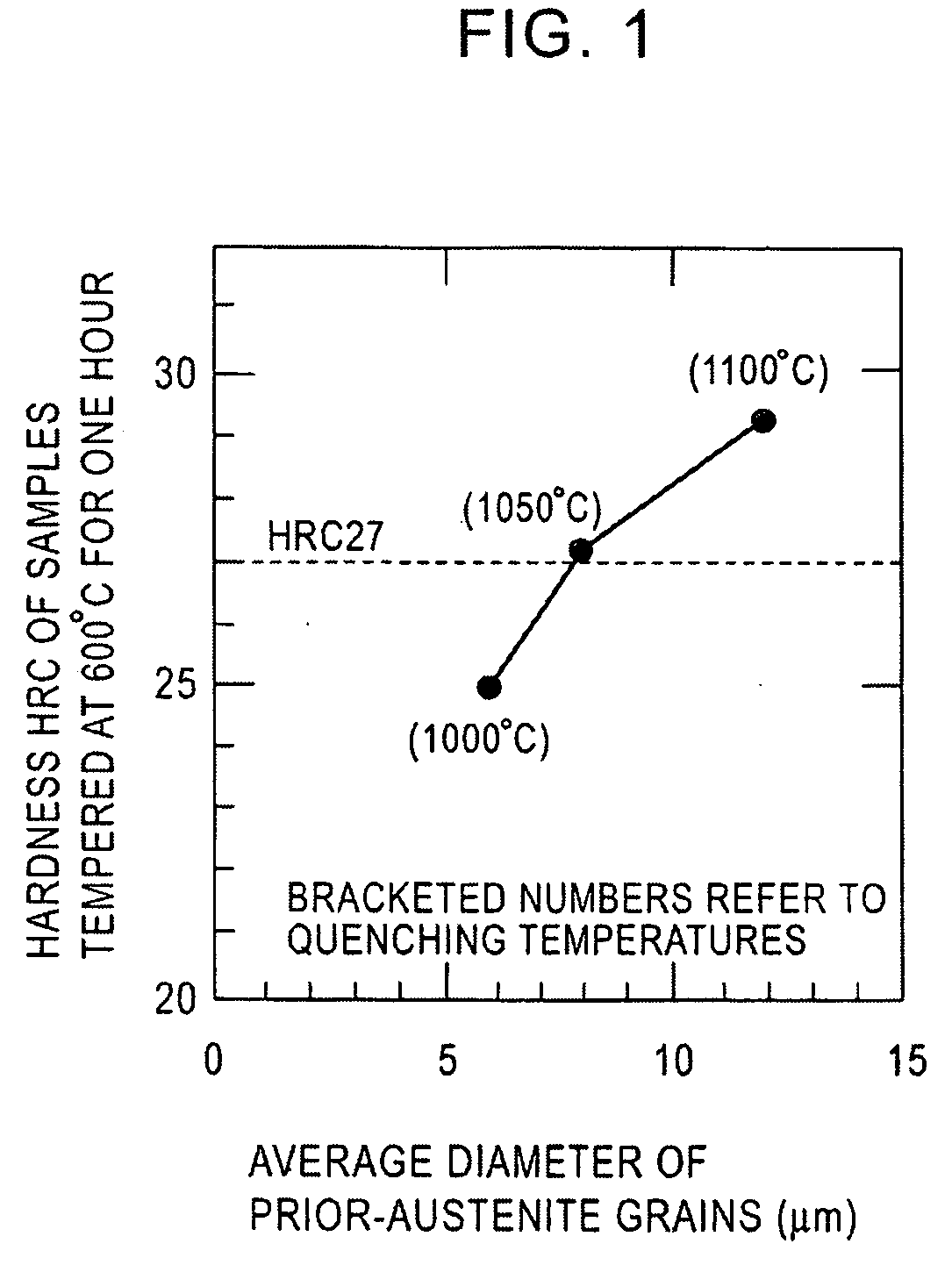Brake Disk Excellent in Temper Softening Resistance and Toughness
a technology brake disk, which is applied in the field of brake disks, can solve the problems of ineffective increase of temper softening resistance, difficult to reach the prior- grain boundary of nb alloying elements during tempering, etc., and achieves the effects of increasing temper softening resistance, preventing the reduction of hardness, and small contribution to precipitation hardening
- Summary
- Abstract
- Description
- Claims
- Application Information
AI Technical Summary
Benefits of technology
Problems solved by technology
Method used
Image
Examples
examples
[0074]Molten steels having compositions shown in Table 1 were produced in a high-frequency melting furnace and then cast into ingots. The ingots were hot-rolled into hot-rolled steel sheets (a thickness of 5 mm). The hot-rolled steel sheets were annealed in such a manner that the hot-rolled steel sheets were heated at 800° C. for eight hours in a reducing gas atmosphere and then gradually cooled. The resulting hot-rolled steel sheets descaled by pickling, whereby brake disk materials were prepared.
[0075]Specimens (size: 5×30 mm×30 mm) were taken from the brake disk materials. The specimens were heated at quenching temperatures (a holding time of one minute) and then cooled at rates shown in Table 2. Samples were taken from the quenched specimens. The samples were observed for metal microstructure, measured for the amount of precipitated Nb, and subjected to a hardening stability test, a temper softening resistance test, and a toughness test after tempering. Testing procedures were a...
PUM
| Property | Measurement | Unit |
|---|---|---|
| Temperature | aaaaa | aaaaa |
| Length | aaaaa | aaaaa |
| Fraction | aaaaa | aaaaa |
Abstract
Description
Claims
Application Information
 Login to View More
Login to View More - R&D
- Intellectual Property
- Life Sciences
- Materials
- Tech Scout
- Unparalleled Data Quality
- Higher Quality Content
- 60% Fewer Hallucinations
Browse by: Latest US Patents, China's latest patents, Technical Efficacy Thesaurus, Application Domain, Technology Topic, Popular Technical Reports.
© 2025 PatSnap. All rights reserved.Legal|Privacy policy|Modern Slavery Act Transparency Statement|Sitemap|About US| Contact US: help@patsnap.com

